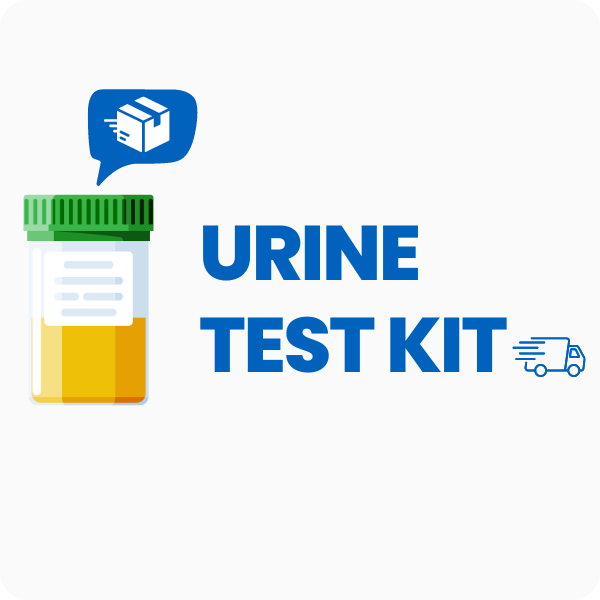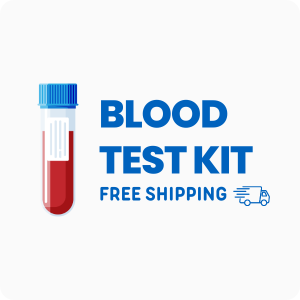Ordering the GPL-TOX | Toxic Non-Metal Chemical Profile | Great Plains Labs | Canada
The GPL-TOX | Toxic Non-Metal Chemical Profile helps identify exposure to a wide range of non-metal environmental chemicals that may affect the body’s detoxification processes, mood, and organ function. This urine-based test is designed to detect specific chemical markers that can be linked to symptoms such as fatigue, headaches, memory issues, and unexplained skin rashes. Interestingly, some of the chemicals measured in this test, like phthalates and perchlorate, are found in everyday products such as plastics, food packaging, and even drinking water, making exposure more common than many realize.
Ordering this test provides several specific benefits:
- Detects exposure to over 170 toxic non-metal chemicals, including pesticides, plastics, and solvents.
- Measures metabolites that can indicate how well the body is processing and eliminating toxins.
- Helps identify possible sources of unexplained symptoms like dizziness, mood changes, or digestive discomfort.
- Supports targeted detoxification strategies by pinpointing which chemicals are present.
- Offers a non-invasive, at-home urine collection process for convenience and privacy.
Who Should Consider Non-Metal Chemical Exposure Testing
People who have ongoing symptoms such as brain fog, chronic tiredness, or skin irritation that have not improved with standard approaches may benefit from this test. For example, someone who has recently moved into a newly renovated home and started experiencing headaches and trouble sleeping could use this test to check for chemical exposure from building materials or household products.
Ordering this test may also be helpful in these situations:
- Persistent fatigue or low energy that does not improve with rest.
- Unexplained digestive issues, such as bloating or nausea, after eating packaged foods.
- Frequent respiratory symptoms, like coughing or shortness of breath, in areas with high air pollution.
- Difficulty concentrating or memory lapses that interfere with daily tasks.
- People who work in salons or auto shops, where chemical exposure is often overlooked, may also benefit from testing.
Testing for chemical exposure can help pinpoint the source of symptoms and guide specific steps to reduce or remove these chemicals from your environment. Delaying this test may allow ongoing exposure to continue, which could make symptoms harder to resolve over time.
Preparing for Urine Chemical Marker Analysis
Fasting is not required for this test, but it is important to collect the urine sample as instructed in the kit for the most useful results. Always follow the directions provided by your doctor or healthcare practitioner to make sure your sample is collected and shipped correctly.
Labs Included When Ordering Your GPL-TOX | Toxic Non-Metal Chemical Profile
| Test Name | Reference Range | Significance | Low and High Levels of GPL-TOX | Toxic Non-Metal Chemical Profile |
|---|---|---|---|
| 2-Methylhippuric Acid (2MHA) | 0–1.5 | 2MHA is a marker for xylene exposure, a solvent found in paints and cleaning products. High levels may indicate recent or ongoing contact with xylene. | High levels mean recent or ongoing xylene exposure.
Low levels mean little or no xylene exposure detected. |
| 3-Methylhippuric Acid (3MHA) | 0–1.5 | 3MHA is another xylene metabolite, helping to confirm exposure to this common solvent. It is often used to assess workplace or environmental contact. | High levels mean significant xylene exposure.
Low levels mean minimal or no xylene exposure. |
| 4-Methylhippuric Acid (4MHA) | 0–1.5 | 4MHA is also linked to xylene exposure, especially from industrial or household sources. It helps confirm the presence of this chemical in the body. | High levels mean ongoing or recent xylene exposure.
Low levels mean little or no xylene detected. |
| N-Acetyl Phenyl Cysteine (NAP) | 0–0.5 | NAP is a breakdown product of ethylbenzene, a chemical found in fuels and plastics. It can show if someone has been exposed to these substances. | High levels mean recent ethylbenzene exposure.
Low levels mean little or no ethylbenzene exposure. |
| Phenylglyoxylic Acid (PGO) | 0–2.0 | PGO is another marker for ethylbenzene and styrene exposure, both used in plastics and rubber. It helps track how the body processes these chemicals. | High levels mean significant exposure to ethylbenzene or styrene.
Low levels mean minimal or no exposure detected. |
| 2-Hydroxyisobutyric Acid (2HIB) | 0–2.0 | 2HIB is a marker for gasoline additives and some plastics. It can show if someone has been exposed to fuel vapors or certain synthetic materials. | High levels mean exposure to gasoline additives or plastics.
Low levels mean little or no exposure detected. |
| Monoethyl Phthalate (MEP) | 0–100 | MEP is a breakdown product of phthalates, chemicals used in plastics and personal care products. It helps identify exposure to these common environmental toxins. | High levels mean recent or ongoing phthalate exposure.
Low levels mean minimal or no phthalate exposure. |
| Dimethylphosphate (DMP) | 0–10 | DMP is a marker for organophosphate pesticide exposure. These chemicals are often found in non-organic produce and some household pest control products. | High levels mean recent organophosphate pesticide exposure.
Low levels mean little or no exposure detected. |
| Diethylphosphate (DEP) | 0–10 | DEP is another organophosphate pesticide marker. It helps confirm exposure to these chemicals, which can affect the nervous system. | High levels mean significant organophosphate exposure.
Low levels mean minimal or no exposure detected. |
| 3-Phenoxybenzoic Acid (3PBA) | 0–2.0 | 3PBA is a marker for pyrethroid pesticide exposure, commonly used in home and garden insect sprays. It helps track if these chemicals are present in the body. | High levels mean recent pyrethroid pesticide exposure.
Low levels mean little or no exposure detected. |
| 2,4-Dichlorophenoxyacetic Acid (2,4-D) | 0–1.0 | 2,4-D is a marker for exposure to a common herbicide used on lawns and crops. It can show if someone has come into contact with treated areas or foods. | High levels mean recent herbicide exposure.
Low levels mean little or no exposure detected. |
| Tiglylglycine (TG) | 0–0.5 | TG is a marker for mitochondrial function and can be affected by certain toxins. It helps assess if chemical exposure is impacting energy production in cells. | High levels mean possible mitochondrial stress from toxins.
Low levels mean normal mitochondrial function or low toxin exposure. |
| N-Acetyl (Carbomethyl) Cysteine (NAE) | 0–0.5 | NAE is a breakdown product of acrylamide, a chemical found in some foods and industrial processes. It helps detect exposure to this potential carcinogen. | High levels mean recent acrylamide exposure.
Low levels mean little or no acrylamide detected. |
| Diphenyl Phosphate | 0–2.0 | This marker shows exposure to flame retardants used in furniture, electronics, and building materials. It helps identify if these chemicals are present in the body. | High levels mean recent flame retardant exposure.
Low levels mean little or no exposure detected. |
| Perchlorate | 0–0.5 | Perchlorate is found in rocket fuel, fireworks, and some fertilizers. It can affect thyroid function by blocking iodine uptake. | High levels mean possible thyroid disruption from perchlorate exposure.
Low levels mean little or no perchlorate detected. |
| N-Acetyl (3,4-Dihydroxybutyl) Cysteine (NABD) | 0–0.5 | NABD is a marker for exposure to certain solvents and industrial chemicals. It helps track if these substances are present in the body. | High levels mean recent solvent exposure.
Low levels mean little or no exposure detected. |
| N-Acetyl (2,Hydroxypropl) Cysteine (NAHP) | 0–0.5 | NAHP is a breakdown product of propylene oxide, used in plastics and foams. It helps detect exposure to this chemical in the environment or workplace. | High levels mean recent propylene oxide exposure.
Low levels mean little or no exposure detected. |
| N-Acetyl (Propyl) Cysteine (NAPR) | 0–0.5 | NAPR is a marker for exposure to certain industrial chemicals and solvents. It helps identify if these substances are present in the body. | High levels mean recent industrial chemical exposure.
Low levels mean little or no exposure detected. |
| 2-Hydroxyethyl Mercapturic Acid (HEMA) | 0–0.5 | HEMA is a marker for exposure to ethylene oxide, used in sterilization and manufacturing. It helps detect if this chemical is present in the body. | High levels mean recent ethylene oxide exposure.
Low levels mean little or no exposure detected. |
| N-Acetyl (2-Cyanoethyl) Cysteine (NACE) | 0–0.5 | NACE is a breakdown product of acrylonitrile, used in plastics and synthetic rubber. It helps track exposure to this chemical. | High levels mean recent acrylonitrile exposure.
Low levels mean little or no exposure detected. |
| N-acetyl-S-(3-hydroxypropyl)-L-cysteine (3-HPMA) | 0–2.0 | 3-HPMA is a marker for acrolein exposure, a chemical found in cigarette smoke and industrial emissions. It helps detect if this toxin is present in the body. | High levels mean recent acrolein exposure.
Low levels mean little or no exposure detected. |
Reference ranges may change slightly as labs update their methods and guidelines. Always check your report for the most current values.
GPL-TOX | Toxic Non-Metal Chemical Profile FAQ
Is there GPL-TOX | Toxic Non-Metal Chemical Profile testing near me?
This test is a home collection kit, so you can collect your urine sample locally and use the draw location link at the top of the page for more details. For people with symptoms like fatigue or headaches possibly linked to chemical exposure, having a convenient collection option makes it easier to get tested without travel or long wait times.
How do I interpret the test results?
While your treating physician should review your results, we also offer a one-on-one test results review with our clinical team to help you understand your report and next steps.
What is the cost of the test?
The price listed for this test includes standard shipping to your address and return shipping to the lab, but draw fees may apply. Ordering this test can help you identify hidden chemical exposures, which may speed up symptom improvement by targeting the right sources.
How often should I retest?
Retesting is usually recommended every 6 to 12 months, especially if you have ongoing exposure risks or are making changes to reduce chemical contact. Regular testing helps track progress and ensures that new exposures are detected early.
How accurate is the test?
This test uses advanced liquid chromatography-tandem mass spectrometry (LC-MS/MS) for precise detection of chemical markers, with a specificity of 98% and sensitivity of 97%. TrueHealthLabs.com partners with CLIA-certified and CAP-certified laboratories to uphold rigorous testing standards for dependable results.
Important Notes
- This test can not be collected or mailed from New York State. Contact us with questions.
Medical Review Board
Reviewed by Jeff Donohue M.D. from Body Logic and Brady Hurst DC, CCCN. Written by True Health Lab’s team of editorial health contributors.
Disclaimer: This information is for educational purposes only and not intended as medical advice. Consult your healthcare provider for personalized guidance.
Why Customers Trust True Health Labs – What People are saying
Also rated 4.6 out of 5 based on 3452 ShopperApproved reviews- See all TrueHealthLabs.com reviews.







